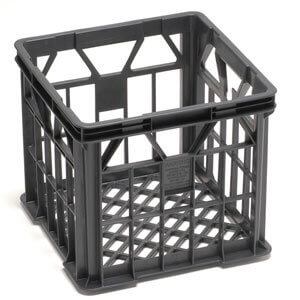-
+61-7-3186-1044

-
info@perpetualpack.com


Stack and Nestable Crates
The Benefits of Using Stack and Nest Containers in Industrial Applications
In industrial applications, efficient and organized storage and transportation of goods play a crucial role in maintaining smooth operations. Stack and nest containers are an excellent solution to address these requirements. These versatile containers provide numerous benefits, including space optimization, ease of handling, improved organization, and enhanced security. In this article, we will explore the advantages of using stack and nest containers in various industrial settings.
Stackable Containers
Stackable containers are an essential component of an efficient logistics system. These containers are designed to be stacked, allowing vertical storage to make the most of available space. By maximizing vertical storage, stackable containers enable businesses to optimize their storage capacity, which is particularly valuable in constrained environments. Stackable containers are often made of durable materials, such as high-density polyethylene (HDPE), ensuring that they can withstand the weight and pressure of being stacked without collapsing or experiencing damage. Additionally, stackable containers often feature a sturdy base and interlocking design to ensure stability and prevent them from toppling over when stacked.
Stack and Nest Containers
Stack and nest containers offer the best of both worlds – the ability to stack efficiently and the convenience of nesting when not in use. These containers have a unique design that allows them to be stacked securely or nested together to save space. When empty, stack and nest containers fit inside each other, significantly reducing the required storage area. This nesting feature enables businesses to optimize their storage space not only for goods but also for containers themselves. The ability to nest also facilitates cost-effective return trips, as empty containers can be easily transported or stored until the next use. Stack and nest containers are commonly used in various industries, including manufacturing, warehousing, logistics, and distribution, to enhance efficiency and save valuable floor space.
Attached Lid Totes
Attached lid totes, often referred to as simply “totes” or “tote boxes,” are a type of stackable container widely used in industrial applications. These containers have a hinged lid that is securely attached to the main body. The attached lid provides protection to the contents of the tote, preventing dust, debris, and moisture from entering. This feature is especially beneficial when transporting delicate or sensitive items. Attached lid totes are designed to easily stack on top of one another, creating a stable and secure storage system. The stackability of these totes enables businesses to make efficient use of vertical space in their facilities while keeping goods well-organized and easily accessible. The availability of different sizes and load capacities makes attached lid totes suitable for a wide range of industrial applications.
Security Totes
Security totes are stackable containers that are specifically designed to provide enhanced security for valuable or sensitive items. These totes often incorporate features such as reinforced sidewalls, tamper-evident seals, and integrated locking mechanisms. Security totes offer protection against theft, unauthorized access, and damage. Their stackable design enables the secure storage of valuable items while optimizing space utilization. In industries where inventory control and asset protection are critical, such as retail, pharmaceuticals, and electronics, the use of security totes can significantly contribute to mitigating risks and maintaining a secure supply chain.
Handheld Containers
Handheld containers are small stackable containers that are designed to be easily transported by hand. These containers are particularly useful in industrial applications where workers need to pick and transport small parts or components. Handheld containers often feature ergonomic handles for comfortable grip and ease of handling. They can be stacked or nested, providing flexibility in storage and transportation. The lightweight and durable nature of handheld containers make them ideal for repetitive use in assembly lines, order picking, and other manual operations. By utilizing handheld containers, businesses can improve efficiency, reduce strain on workers, and maintain a well-organized workspace.
Conclusion
Stack and nest containers offer numerous benefits in industrial applications. From maximizing storage space to improving organization and security, these containers provide a versatile and cost-effective solution for businesses. Whether it is stackable containers, stack and nest containers, attached lid totes, security totes, or handheld containers, each type serves a specific purpose in streamlining logistics and operations. By investing in these containers, companies can optimize their storage capacity, enhance efficiency, and protect their valuable assets.















